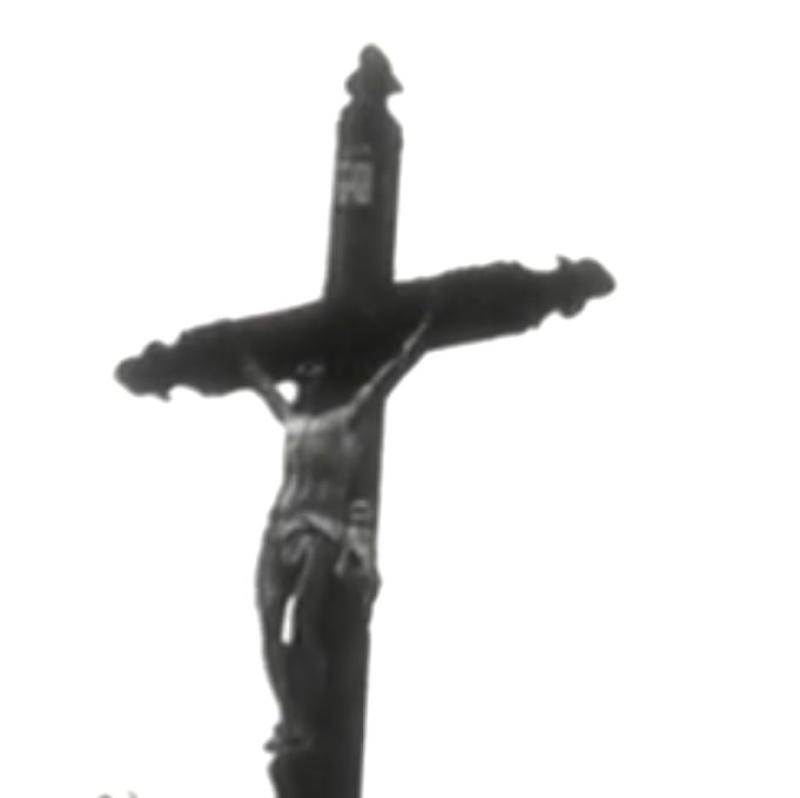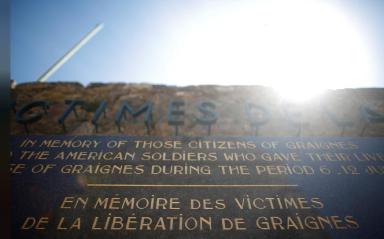In western France, a village remembers D-Day's 'secret massacre'




By dawn, dozens of men from the 507th Parachute Infantry Regiment had hunkered down on the Rigault farm outside the village of Graignes. As they did, the distant boom of heavy artillery carried inland as allied forces invaded Europe on the Normandy beaches to drive the Nazis from France.
“They said, ‘Don’t be afraid, we’re you’re friends, the Tommies,’” Rigault, now 86, recalled. “We thought we’d been liberated. We were overjoyed. We didn’t know it that morning, but it would be a month before Graignes was set free.”
Some 170 paratroopers had been involved in one of the worst misdrops of any airborne unit on D-Day. Separated from their comrades in German-occupied territory, the troops dug in.

taken couple of weeks after D-Day, showing her among relatives and U.S. soldiers.
Picture taken in Graignes, France May 15, 2019.
REUTERS/Christian Hartmann
The inhabitants of Graignes were swift to help, feeding the U.S. troops, relaying intelligence and retrieving their equipment from the marshland. The village would pay a heavy price for offering assistance. It would lead to what they now call the “secret massacre” of D-Day.

The Americans converted the village boys school into a command center, mined access roads and turned the belfry of Graignes’ 12th century church into an observation post.
Only the church bell tower stands today, a memorial to the U.S. soldiers and civilians killed during the battle for Graignes. The Germans launched their assault on June 11, as Marthe Rigault and her elder sister, Odette, attended mass.

REVENGE
The village has invited both U.S. and German troops to attend a dinner to mark the 75th anniversary of the Normandy landings and the battle for Graignes. President Donald Trump will attend a ceremony at a nearby U.S. war cemetery to honor his country’s forces who took part in the D-Day landings.
In Graignes, the U.S. paratrooopers were outnumbered and outgunned.

The Germans were brutal in their reprisals against the village, Rigault recalled.
The village priest, Father Albert Leblastier, and a Franciscan priest were shot dead and their bodies burned. Homesteads were torched. The maimed paratroopers left behind were split into two groups: some were marched down the road and executed, others were “thrown into the marshes and bayoneted,” Rigault recalled. “We weren’t allowed to pull them out for several days.”

Rigault treasures a battered certificate signed by Dwight Eisenhower, in his capacity as the commanding U.S. general in Europe, on behalf of the U.S. president expressing thanks to her father, Gustave, for helping the paratroopers.
Then, in 1984, a small number of the U.S. soldiers whose lives had been saved by the villagers returned to Graignes.
“It was tough for them to come back because they felt that in some way they had abandoned the villagers, left them to face the Germans’ revenge,” said Denis Small, mayor of Graignes for the past 22 years. “But the village received them for the liberators that they were.”

Graignes was liberated from the Germans on July 12, 1944.

Early June, every year, French media are full of stories about D-Day. This year, being the 75th anniversary, is even fuller than usual.
Veterans are now a small population, so they get special attention.
I saw this story on a documentary about D Day. Amazing courage of the village and it's people.
Excellent article.
"Ordinary courage"
Great story, good seed Bob!